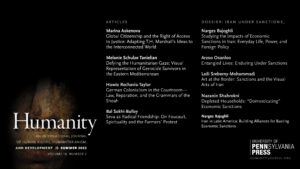From the first months of 1947 up to October 1948, the United Nations Educational, Scientific, and Cultural Organization (UNESCO) made a remarkable, and largely misunderstood, effort to directly shape the content of what became the Universal Declaration of Human Rights (UDHR), which was adopted by the United Nations General Assembly on December 10, 1948. Although this effort failed in its objectives, the work of UNESCO during this short time (about a year and a half) has been invested with a range of meanings and interpretations that go well beyond the historical record. The reasons for the misreading and appropriation of the work of UNESCO during this period can be understood on both historiographical and ideological grounds. Nevertheless, this essay will focus on the specific historical timeline within which the UNESCO human rights project was conceived and implemented. Given the incomplete ways in which the role of UNESCO and the key participants in the process have been characterized, often with significant implications for the wider history of human rights after the war, it is important to establish an interpretive record of this key period in UNESCO’s history. Thus, considerable attention will be given here to a description of the evolution of institutional developments, bureaucratic and personal relationships, and historical idiosyncrasies, with an eye toward how these deepen our appreciation for the role of UNESCO as a foundational institution of the postwar settlement.1 However, beyond the historical analysis, this essay will acknowledge the broader stakes involved through a discussion of how UNESCO’s efforts to shape what became the UDHR reflect what will be characterized as the “unsettled firmament” of the international system in the early postwar years, and it will portray a UNESCO that “might have been” had its bold moves in 1947 not been turned away and even denounced by what turned out to be the stronger institutional and political forces working on the American side within the embryonic UN system.2
Current Issue

Our long-awaited issue of Humanity journal is out! Its special dossier, Iran under Sanctions, examines the myriad and devastating impacts of international sanctions on society, culture, and politics. The issue includes an essay on the legal case Herero and Nama v. The Federal Republic of Germany to theorize reparations for German colonialism and slavery as they became linked with the aftermath of the Shoah. It also includes essays on T.H. Marshall and the right of access to justice; visual representations of Armenian genocide survivors; and, the concept of radical friendship in relation to the Farmers’ Protests in India.
View entire issue > Save Save Save
📘'Choose Your Bearing: Édouard Glissant, Human Rights and Decolonial Ethics' is now available for pre-order!
❕Grab your copy and save 30% OFF using the code NEW30 at checkout : https://edin.ac/3JIcRne
@HumanityJ